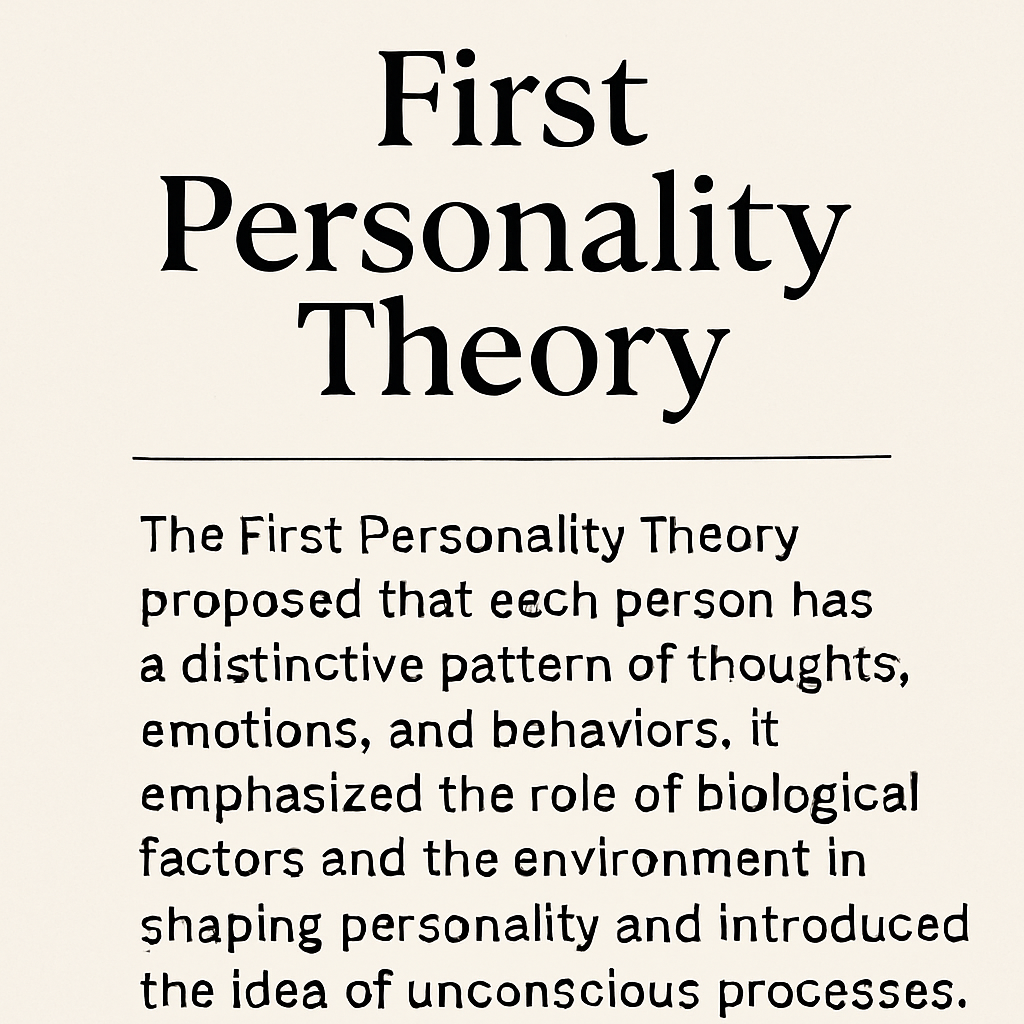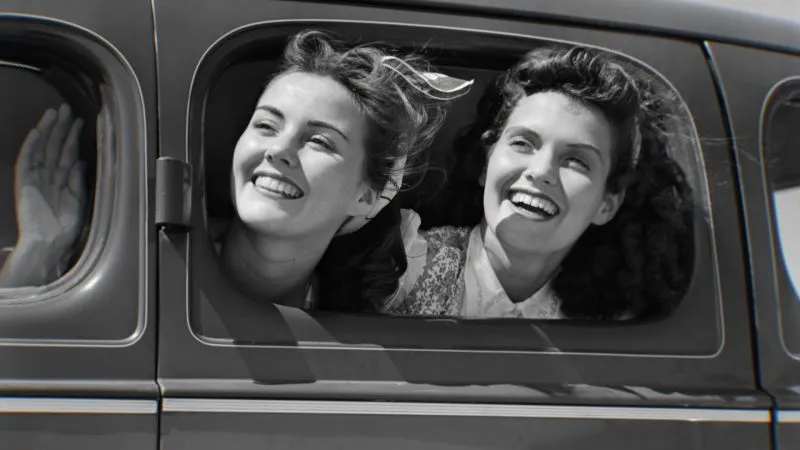Introduction:
Personality is a complex and fascinating aspect of what makes each of us unique. The first personality theory delves into the foundational concepts that laid the groundwork for understanding this intricate human characteristic. This theory, often attributed to the ancient Greek physician Hippocrates, proposes that our personalities are determined by a balance of four bodily fluids, or “humors”: blood, yellow bile, black bile, and phlegm. While modern psychology has moved far beyond this initial framework, exploring these early concepts provides a crucial historical context for the evolution of personality studies. Understanding the first personality theory is not just an academic exercise; it’s a journey into the very beginning of our attempts to scientifically categorize and explain human behavior.

1. The Four Humors: The Core of the First Personality Theory
At the heart of the first personality theory are the four humors. Each humor was believed to be associated with a specific element, organ, and set of personality traits. A person’s dominant humor was thought to dictate their temperament.
- Blood (Sanguine): Linked to the element of air and the liver, a predominance of blood was said to create a sanguine temperament. Sanguine individuals were seen as cheerful, optimistic, and sociable. They were lively, talkative, and tended to be the life of the party.
- Yellow Bile (Choleric): This humor was associated with the element of fire and the spleen. A person with a choleric temperament was thought to be passionate, ambitious, and strong-willed. However, they were also prone to irritability and anger, often described as fiery and easily provoked.
- Black Bile (Melancholic): Tied to the element of earth and the gallbladder, a melancholic temperament was characterized by seriousness, introspection, and a thoughtful nature. These individuals were often quiet and analytical but could also be prone to sadness and depression.
- Phlegm (Phlegmatic): The humor of phlegm was linked to the element of water and the lungs. A phlegmatic personality was considered calm, peaceful, and composed. They were often reliable and patient but could also be seen as apathetic or slow to act.
The first personality theory posited that true balance among these humors was rare. Most people had one dominant humor that shaped their character, explaining why some people were naturally more outgoing, while others were more reserved.
2. The Role of Imbalance: Sickness and Personality
A key aspect of the first personality theory was the belief that an imbalance in the humors not only affected personality but also caused physical and mental illness. For example, an excess of black bile was thought to lead to melancholy and depression, while an excess of yellow bile could result in fits of rage. This theory provided a holistic view where the mind and body were inextricably linked. A physician’s role was to restore the balance of the humors, often through methods like diet, exercise, or even bloodletting. This integrated approach highlights how ancient medical and psychological thought were intertwined, with the first personality theory serving as a cornerstone.
3. The Influence of the Elements and Seasons
The first personality theory didn’t exist in a vacuum; it was deeply connected to the natural world. Each humor was associated with one of the four classical elements: air, fire, earth, and water. This connection provided a symbolic framework for understanding the temperaments.
- Sanguine (Blood) and Air: Air is light, mobile, and expansive, much like the cheerful and sociable sanguine personality.
- Choleric (Yellow Bile) and Fire: Fire is hot, dynamic, and consuming, mirroring the passionate and sometimes aggressive choleric type.
- Melancholic (Black Bile) and Earth: Earth is heavy, solid, and stable, reflecting the serious and grounded nature of the melancholic temperament.
- Phlegmatic (Phlegm) and Water: Water is cool, fluid, and calm, perfectly representing the peaceful and easygoing phlegmatic personality.
This elemental association gave the first personality theory a philosophical depth that resonated with ancient thinkers and added another layer of meaning to its concepts.
4. Temperament vs. Personality: A Crucial Distinction
While often used interchangeably today, the terms temperament and personality have distinct meanings, a difference that is subtly rooted in the first personality theory. Temperament refers to the biologically-based, foundational aspects of personality, such as mood, activity level, and emotional responsiveness. It is often considered the raw material from which personality is built. The four humors directly describe these innate temperaments. Personality, on the other hand, is the full, developed character of an individual, shaped by temperament, environment, experiences, and social interactions. The first personality theory provided a framework for temperament, but it’s important to recognize that it didn’t account for the complex interplay of factors that we now know shape a complete personality.
5. From Humors to Modern Trait Theory
The journey from the first personality theory to modern psychology is a fascinating one. While the concept of humors has been debunked, its influence is still surprisingly visible. The four temperaments described by Hippocrates—sanguine, choleric, melancholic, and phlegmatic—bear a striking resemblance to some of the dimensions in modern trait theories. For instance, the sanguine and choleric temperaments can be seen as precursors to modern concepts of extraversion, while the melancholic and phlegmatic types align with introversion. This legacy demonstrates the incredible staying power of these initial observations. The first personality theory, despite its scientific inaccuracies, provided a simple yet powerful way to categorize human behavior, a goal that continues to drive modern personality research. It was a truly groundbreaking attempt to systematize our understanding of what makes us tick.
6. The Enduring Legacy of the First Personality Theory
You might wonder why we should care about a theory that is over two millennia old and based on flawed science. The answer lies in its enduring legacy. The first personality theory was not just a passing idea; it was the dominant framework for understanding human behavior for centuries. Its influence can be found in the works of great thinkers like Galen and even in literature, where characters are often crafted around these four temperaments. The theory’s lasting impact is a testament to its elegance and its ability to provide a clear, easy-to-understand model for human variation. It represents a critical first step in the scientific study of personality, a bold attempt to move beyond simple observation and create a systematic, testable hypothesis about human nature. The first personality theory laid the groundwork for future generations of psychologists to build upon, refine, and eventually, revolutionize the field.
7. Critiques and The Path Forward
No historical account is complete without a discussion of its flaws. The first personality theory faced significant criticism, particularly as scientific understanding of the human body advanced. The theory was purely speculative, with no empirical evidence to support the link between bodily fluids and personality. Moreover, it was a static model that did not account for personality changes over time or the impact of social and environmental factors. These limitations are precisely what pushed the field of psychology to evolve. The failures of the first personality theory inspired scientists to seek more rigorous, evidence-based models. This quest led to the development of psychodynamic theories, humanistic approaches, and, eventually, modern trait theories and cognitive-behavioral models. The first personality theory was the starting line, not the finish line, for the science of personality. It serves as a powerful reminder that all scientific progress is built on the foundations of earlier ideas, even the ones that are ultimately proven wrong.
Conclusion:
The first personality theory is more than just a historical footnote; it is a vital part of the story of psychology. It represents humanity’s earliest attempt to systematically classify and understand the complexities of the human mind. The four humors and their corresponding temperaments provided a simple, yet compelling, framework for explaining why people behave the way they do. While its scientific basis has been superseded, the fundamental questions it sought to answer—”Why are we different from one another?” and “What shapes our character?”—remain at the heart of psychology today. Studying the first personality theory offers a valuable window into the origins of our field and reminds us that every great scientific journey begins with a single, often flawed, but profoundly important step.








